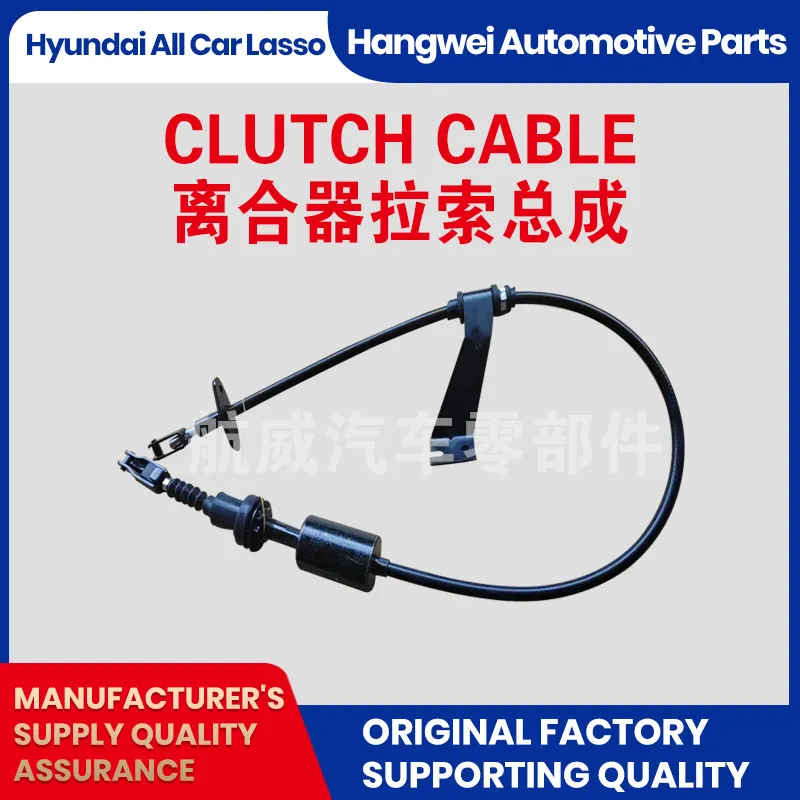Which Clutch Line Is Best: Stainless, OEM-Fit, Leak-Free?
Clutch Push-Pull Cable: What’s Changing, What Matters, and What to Buy
If you’re shopping for a clutch line, here’s the short version: materials and testing now make a bigger difference than brand names. I’ve toured suppliers from coastal plants to inland workshops, and—surprisingly—the leaders aren’t always the loudest marketers. One quiet standout sits in Qinghe County (Minjiang Street south, Wuzhishan Road east), producing a clutch push-pull cable that feels like it was designed by people who’ve actually wrestled with a stubborn pedal in January.

Industry trends (and a bit of real talk)
Three shifts are reshaping the market: higher-cycle durability, corrosion defense that actually works in road salt, and smoother, lower-friction liners. In fact, many customers say the newer PTFE-lined designs cut pedal effort enough to notice on day one. Also, OEMs keep pushing for IATF 16949 compliance—no certification, no seat at the table.
Process flow: materials, methods, tests
- Materials: high-carbon steel inner wire (option: stainless 304/316), low-friction PTFE liner, abrasion-resistant PA/PVC outer sheath, zinc/nickel plated end-fittings.
- Manufacturing: multi-strand wire drawing → pre-stretching → swaging end-fittings → extrusion of liner/sheath → length trimming → 100% functional pull test.
- Testing standards: salt spray per ISO 9227 / ASTM B117; cycle life bench up to ≈300k–500k cycles; tensile verification; low-temp actuation @ −30°C.
- Service life: around 5–8 years in normal road use (real-world use may vary with climate and load).
- Industries: passenger cars, light trucks, motorcycles, off-highway, small marine throttles/converters, AGV/industrial equipment.
Typical specs (Clutch Push-Pull Cable)
| Parameter | Spec (≈, may vary) |
|---|---|
| Inner wire | 7×7 high-carbon steel, Ø ≈1.8–2.5 mm; stainless 304/316 optional |
| Liner | PTFE low-friction, dry-lube treated |
| Outer sheath | PA/PVC, UV-stabilized, black |
| Operating temp | −30°C to +120°C continuous |
| Min bend radius | ≈80–120 mm (design-dependent) |
| Cycle life (bench) | ≥300,000 cycles @ rated load; premium builds up to 500,000 |
| Corrosion test | 240–480 h neutral salt spray to red rust on fittings |
Applications and customer feedback
Use it where pedal feel, durability, and easy routing matter: compact sedans, pickups hauling on steep grades, delivery scooters in the rain. One fleet manager told me their drivers felt a “cleaner” engagement—less notchiness—after switching to this clutch line. Another shop in the Midwest said winter freeze-ups basically disappeared once they spec’d the PTFE liner and improved seals.
Case study (light trucks, coastal city)
A contractor replaced OE assemblies with this clutch line on 40 trucks. Over 12 months: bench-tested 400k cycle spec, field failures dropped from 6 to 1, and pedal effort measured ≈12% lower (shop dyno). Maintenance windows stretched from 12 to 18 months. Small sample, sure, but convincing.
Vendor comparison (at a glance)
| Vendor | Certifications | Lead time | Customization | Notes |
|---|---|---|---|---|
| HWEI Cable (Qinghe) | ISO 9001; targets IATF 16949 alignment | ≈15–25 days | End-fittings, stroke, sheath color, liner | Strong salt-spray results, responsive engineering |
| Generic Trading Co. | Basic factory ISO 9001 | ≈30–40 days | Limited | Price-led; variable QC |
| Local Workshop | None/Shop-level | ≈7–10 days | Small-batch custom | Fast but inconsistent metals |
Why this clutch line stands out
- Low-friction PTFE liner = smoother engagement and reduced pedal effort.
- Corrosion resistance demonstrated by 240–480 h salt spray on plated fittings.
- Measured durability to ≥300k cycles; select builds up to 500k.
- Tight QC with 100% functional pull test before shipment.
To be honest, you’ll still want to match cable geometry to your pedal ratio and firewall grommet. But if you need a dependable clutch line that won’t seize the first winter, this one earns its keep.
Certifications and references
- IATF 16949:2016 Automotive Quality Management System, IATF Global Oversight.
- ISO 9227:2017 Corrosion tests in artificial atmospheres — Salt spray tests, ISO.
- ASTM B117 Standard Practice for Operating Salt Spray (Fog) Apparatus, ASTM International.
- ISO 9001:2015 Quality Management Systems — Requirements, ISO.
-
Clutch Line: Braided, Leak-Proof, OEM-Grade PerformanceNewsNov.10,2025
-
Throttle Cable: Durable, Smooth Control & Universal FitNewsNov.10,2025
-
Throttle Cable: Durable, Smooth, Universal Fit, Easy InstallNewsNov.10,2025
-
Clutch Line: Durable, Leak-Proof, OEM-Grade PerformanceNewsNov.10,2025
-
Hand Brake Cable | Custom, Universal & Trailer SolutionsNewsNov.10,2025
-
Clutch Line: High-Pressure, OEM-Fit, Corrosion-ResistantNewsNov.03,2025
